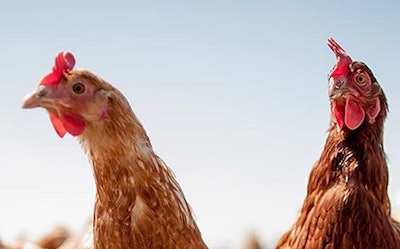
As the northern hemisphere winter progresses, further cases of highly pathogenic avian influenza (HPAI) are being reported across Asia.
In South Korea, the number of confirmed HPAI outbreaks in poultry has risen to 27 in the current disease series.
Following an eight-month hiatus, the first case was confirmed in early December, according to Korea Times recently. It reports that the latest outbreak was in a flock of around 239,000 chickens at a farm in Cheonan, around 85km south of the capital city, Seoul.
Of the nation’s outbreaks in poultry so far this 2023-2024 winter season, all have been in western provinces. The agriculture ministry reports that 18 premises have been in North Jeolla, seven in South Jeolla, and two in South Chungcheong. Affected have been 15 flocks of chickens — including 13 of laying hens and two of broiler breeders — and 12 of ducks.
Earlier this month, the ministry confirmed South Korea’s 26th HPAI outbreak of the season. Affected were around 33,000 ducks, some of which tested positive for HPAI when inspected prior to transportation to the slaughterhouse. Following the positive test, a 24-hour period of standstill was applied to premises with ducks, the company, and other related businesses in the surrounding area of South Jeolla.
Based on official notifications from the veterinary authority to the World Organisation for Animal Health (WOAH), two different virus serotypes have been detected at the infected premises. As well as the H5N1 variant currently circulating widely across the world, the H5N6 serotype has also been detected in some of South Korea’s farm outbreaks and wild bird cases. This form was last found in the country in April of 2018.
Over the past two weeks, three outbreaks in South Korean poultry flocks linked to the H5N1 virus serotype have been confirmed to WOAH. These bring the series total so far to four, with almost 79,000 birds directly impacted. Meanwhile, presence of the H5N6 variant has been reported at 21 premises, affecting almost 1.07 million commercial poultry.
Two further outbreaks reported in Japanese poultry
In recent weeks, two more HPAI outbreaks have been notified to WOAH from the animal health agency of Japan. These bring the nation’s total farms affected since the start of the current season in November to six, involving just over 550,118 birds.
In the final days of last year, the H5N1 virus was detected in a flock of around 322,000 laying hens in Gunma. A few days later, a farm in Gifu with almost 49,800 broilers was found to be infected. These prefectures are located in Kanto and Chubu, which are adjacent regions in central Honshu island.
3 HPAI viruses detected in Japan’s wild birds
Among Japan’s wild birds, a further 25 have tested positive for the same virus subtype, according to other recent WOAH notifications.
Furthermore, the country’s first ever detection of the H5N5 variant was confirmed in a wild crow on the northernmost main island of Hokkaido case in mid-December. After an absence of more than five years, the H5N6 serotype was detected in a bird of prey found dead in the most southwestern region of Kyushu and Okinawa in early December.
Study: biosecurity tip for poultry farmers
Latest research from Kyushu University in Japan has identified blowflies as carriers of HPAI virus.
According to Japan Times, scientists found the virus to be present in the digestive tracts of 15% of the blowflies they tested. With these flies particularly attracted to poultry manure for egg-laying in the winter months, they urged poultry owners to install fly screens or nets on their farms, and to check regularly that they are still effective in keeping out the insects.
Cambodia records HPAI in 3 village flocks
Since the first cases linked to the H5N1 virus variant in late November of last year, the number of outbreaks in Cambodia registered with WOAH has increased to five.
Latest to be confirmed were infections in backyard flocks in three villages in the first week of 2024. Like earlier outbreaks, two were in the southern province of Prey Veng. However, the latest cases were further north in Siem Reap. They bring to almost 5,800 the total number of poultry affected in the country since November.
HPAI outbreaks elsewhere in Asia
In Taiwan, there has been a second HPAI outbreak in poultry, according to the latest official report to WOAH.
Following the first cases of the season in late November, a flock of around 22,700 chickens tested positive for the H5N1 virus variant in early December.
Meanwhile, the same virus serotype has been detected in four more wild birds in Hong Kong, according to the Special Administrative Region’s latest official notification.
On the other side of the continent, a mass mortality event in wild swans in western Kazakhstan at the end of December was reported to WOAH as caused by an HPAI virus of the H5 family.
View our continuing coverage of the global avian influenza situation.















